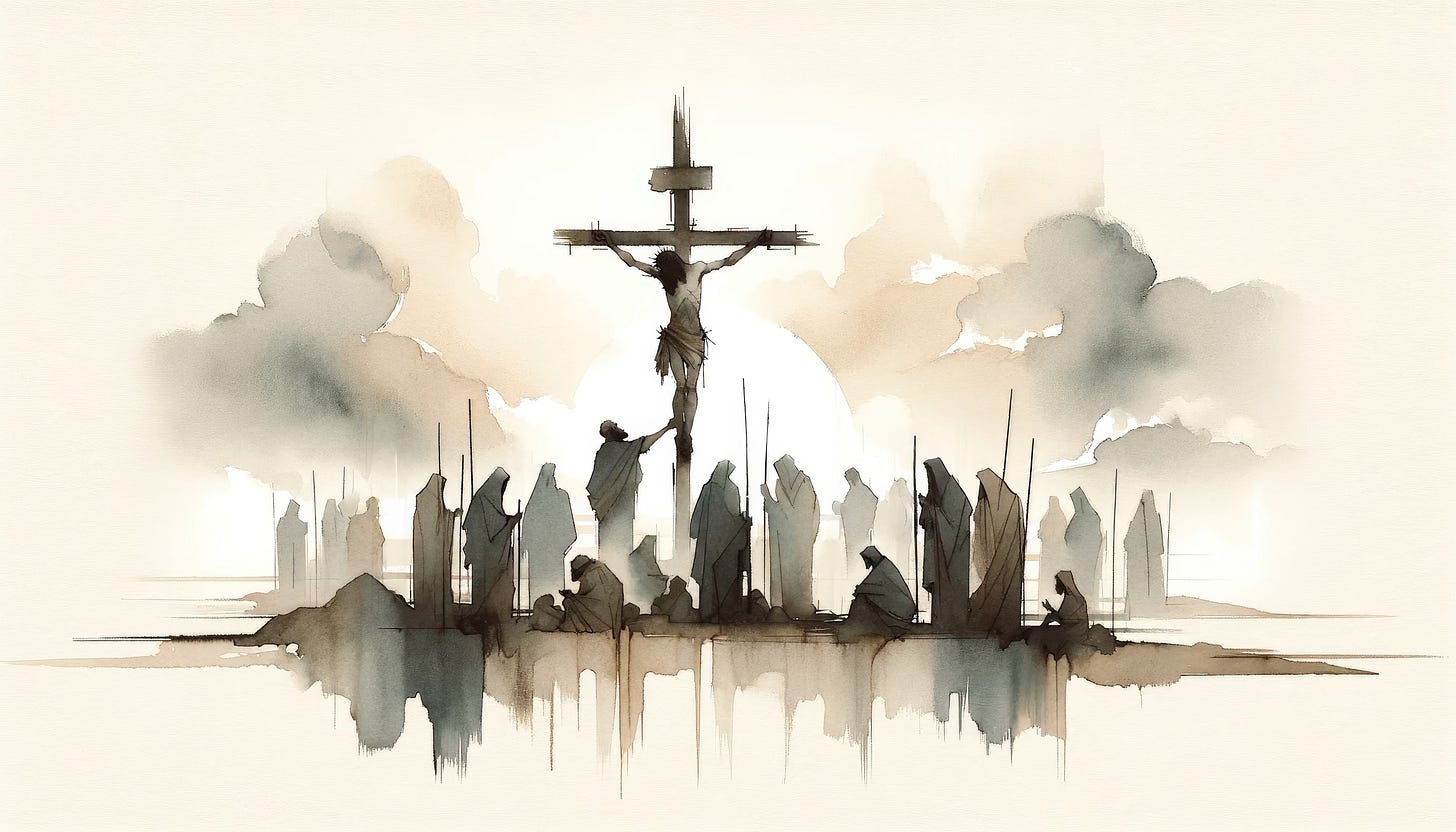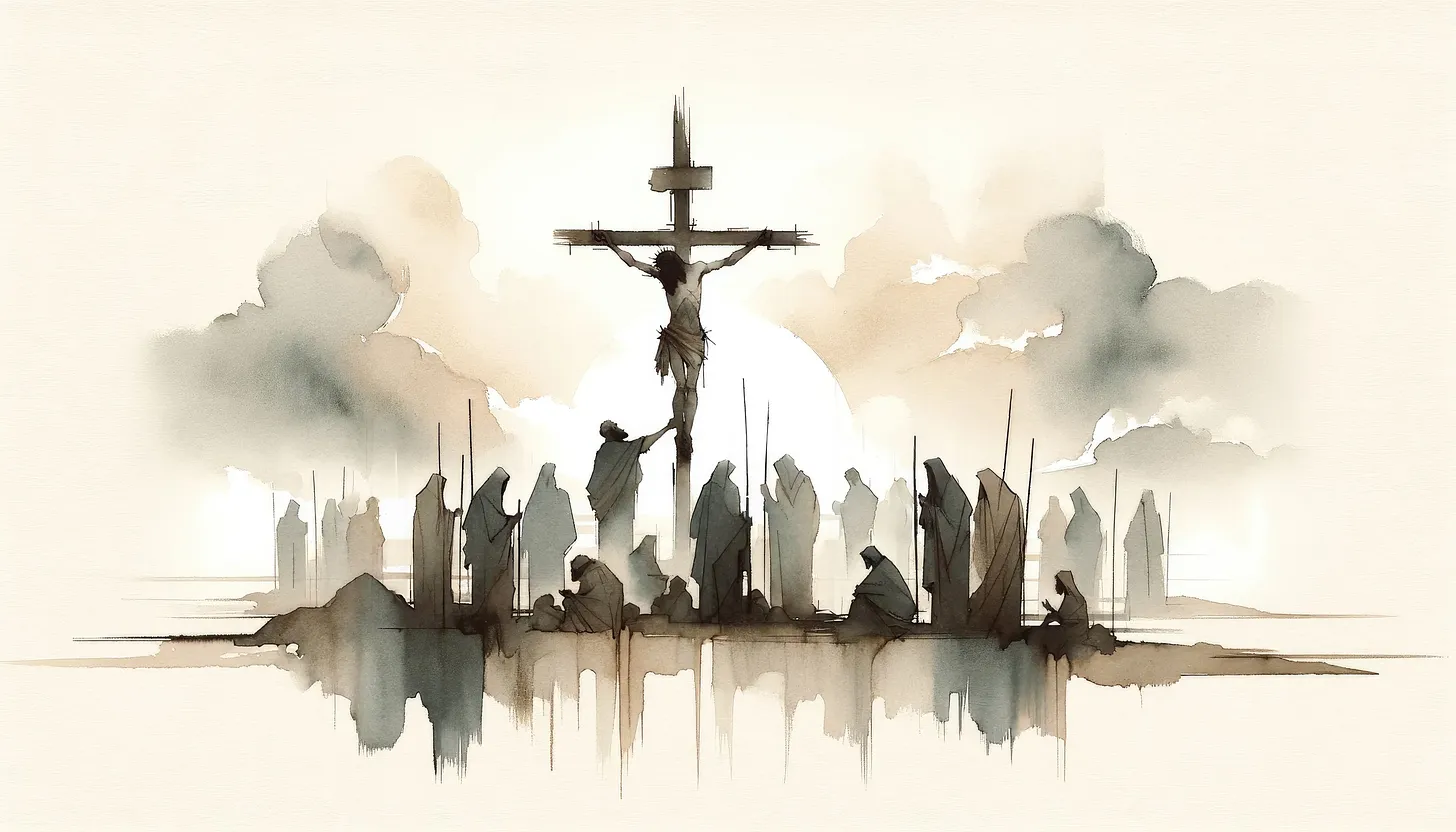I pasted the following on Telegram this morning for our Peru mission team:
Today is Good Friday, when we remember that Jesus went to place of the cross, called Golgatha because it looked something like a skull. He was so exhausted physically that he could not carry the weight of the wood of the cross piece onto which he would be lifted and held up high for the crowds and the world to see, and mock, laugh and insult him. So Simon of Cyrene carried it for him to the place of Jesus’ dying. I often wonder about Simon. What was he thinking under the weight of the wood? And I wonder – Am I willing to carry the wood of Jesus’ cross-piece? Am I willing to bear it all the way to the place of execution. Jesus did the dying; am I ready to carry his cross?
Today – Good Friday – my thoughts are on the cross on which Jesus died. Tomorrow – all being well – I will think (with Fleming Rutledge’s help) on Jesus’ descent into Sheol. Then – for Sunday – glory in Christ’s resurrection.
On my bookshelf are three books – actually more than three, but three important biblical, theological and pastoral studies: Raymond Brown’s two volume set: The Death of the Messiah; Greg Boyd’s two volumes, Crucifixion of the Warrior God; and Fleming Rutledge’s The Crucifixion: Understanding the Death of Jesus Christ.

There are other excellent books and articles, obviously, on my shelf and in archives I have saved, but few of them are highlighted and annotated as much at Rutledge’s Crucifixion; it is at once both thoughtfully theological and personally pastoral. Nearly every page is highlighted and annotated. I come back to The Crucifixion again and again as I seek to live as a follower of the risen Jesus; I look for those highlighted passages that nurture my daily life.
Rutledge expresses the uniqueness of the death of the Son of God as the foundation of our Christian faith:
“…the principal purpose of this book about the crucifixion will be to strengthen the reader’s surmise that the cross of Jesus is an unrepeatable event that calls all religion into question and establishes an altogether new foundation for faith, life and a human future.…It is the crucifixion as a means of execution [the apostle Paul] says, that would normally cause shame for anyone assciated with the victim. Paul is quite specific about this in the Corinthian letter. ‘It pleased God through the folly of what we preach to save those who believe,’ Paul writes. ‘We preach Christ crucified, a stumbling block to Jews and folly to Gentiles…. For the foolishness of God is wiser than men, and the weakness of God is stronger than men’ (I Cor. 1:21, 23, 25).”1
Rutledge continues…
“The utter uniqueness of the New Testament gospel is not the foolishness itself, but the linkage of holy foolishness to an actual historical event of government-sponsored torture and public execution–a happening, it must be emphasized, without any spiritual overtones or redeeming religious features.…It requires a considerable effort of the imagination to enter into the first-century world of the Roman Empire so as to understand the degree of offensiveness attached to crucifixion as a method of execution.”
The first four chapters speak to “The Primacy of the Cross”, “The Godlessness of the Cross”, “The Question of Justice”, and “The Gravity of Sin”.
The author carefully considers whether it is helpful in understanding the cross to write about its physical and psychological effects on the condemned and crucified human person.
“Crucifixion…was supposed to be seen by as many people as possible. Debasement resulting from public display was a chief feature of the method, along with the prolongment of agony. It was a form of advertisment, or public announcement – this person is the scum of the earth, not fit to live, more an insect than a human being. The crucified wretch was pinned up like a specimen. Crosses were not placed out in the open for convenience or sanitation, but for maximum public exposure.” [Rutledge continues…] “Crucifixion as a means of execution in the Roman Empire had as its express purpose the elimination of victims from consideration as members of the human race…that was its function.…Crucified persons were not of the same species either the executioners or the spectators….”
One more quote from The Crucifixion: Understanding the Death of Jesus Christ:
“Jesus took upon himself the role of the ultimate Other. He allowed himself to become less-than-human scum. All the evil impulses of the human race came to focus in him.58 Now to be sure, in one sense the crucifixion is only one barbarous scene among many scenes of human atrocity. However, there is one feature of the crucifixion that sets it aside from the rest. Many have believed that the ultimate criterion for the interpretation of the cross of Christ is the “cry of dereliction”: “My God, my God, why have you forsaken me?” – Eli, Eli, lama sabachthani? – There can be no honest interpretation of the event without an account of this uniquely terrible saying from the cross, the only saying to be reported by not just one, but two Evangelists.
This cry haunts our collective imagination…it brings the irreligiousness of the cross into sharp focus and shows how important the cry of dereliction is in demonstrating the complete identification of Jesus with our compromised…human condition.”2

Chapter titles reveal the comprehensive nature of Rutledge’s Crucifixion:
-
The Passover and the Exodus
-
The Blood Sacrifice
-
Ransom and Redemption
-
The Great Assize [or ‘Trial’]
-
The Apocalyptic War: Christus Victor
-
The Descent into Hell – we do not often consider this in evangelical thinking
-
The Substitution
-
Recapitulation
Conclusion: Condemned into Redemption: The Rectification of the Ungodly
“The climax of the gospel story has far too many particularities to be ‘spirtual’ – it takes place in the midst of political and socioeconomic life, it is shocking and violent, it threatens and alienates established religious authorities, it reveals the significance of God’s unaccountible election of Jews, and its central personage makes unnerving claims about himself and his relationship to his own religious milieu.”3
When I was a pastor at Elmbrook Church twenty and more years ago we had Keith and Kristyn Getty for many worship concerts, including Easter and Christmas. This Christus Victor video seems VERY appropriate for Easter…
pp. 2-3
p. 97
p. 572



